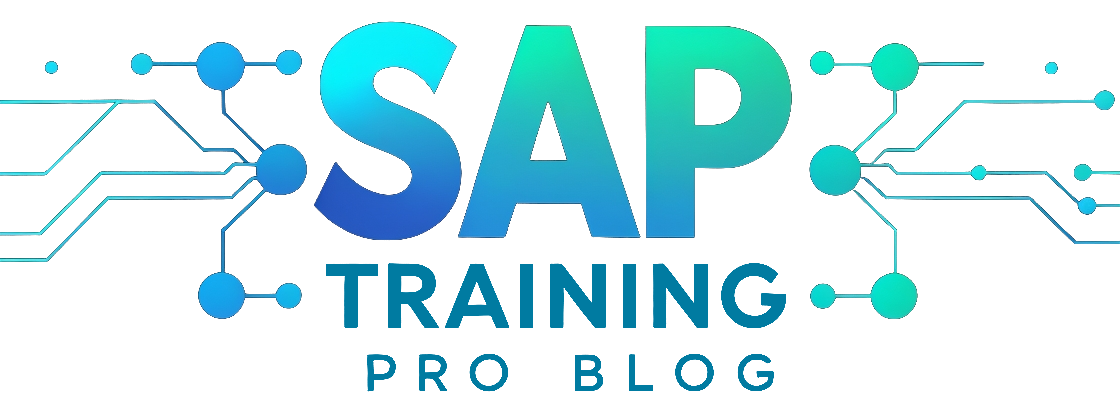Navigating the SAP Product Roadmap: What’s on the Horizon?

An overview of the SAP product roadmap and the upcoming developments and updates that users can expect in the near future.
Table Of Content
SAP, a leading provider of enterprise software solutions, is constantly evolving its product offerings to meet the changing needs of businesses. The SAP product roadmap provides a glimpse into the future developments and updates that users can expect in the near future. This roadmap serves as a guide for businesses to plan their digital transformation strategies and stay ahead of the competition.
With a focus on innovation and customer-centricity, SAP is committed to delivering cutting-edge solutions that drive business growth and success. The product roadmap encompasses various areas, including cloud solutions, artificial intelligence and machine learning, industry-specific solutions, integration and connectivity, user experience and interface, mobile applications, and design thinking.
By staying up-to-date with the SAP product roadmap, businesses can gain insights into the latest advancements and enhancements that will shape the future of enterprise software. Whether it’s leveraging the power of the cloud for scalability and flexibility, harnessing the potential of AI and ML for automation and predictive analytics, or tailoring industry-specific solutions to meet unique business requirements, SAP is at the forefront of driving innovation and enabling digital transformation.
Cloud Solutions
Cloud solutions have become increasingly popular in the business world, and SAP is at the forefront of this technological revolution. With its latest advancements in cloud solutions, SAP is empowering businesses with scalability, flexibility, and cost-effectiveness.
Scalability is a key advantage of SAP’s cloud solutions, allowing businesses to easily expand their operations as their needs grow. Whether it’s adding new users, increasing storage capacity, or deploying additional applications, SAP’s cloud solutions can seamlessly accommodate these changes without any disruption to the business.
Flexibility is another crucial aspect of SAP’s cloud solutions. Businesses can choose from a range of deployment options, including public, private, and hybrid clouds, depending on their specific requirements. This flexibility enables organizations to tailor their cloud strategy to align with their unique business goals and IT infrastructure.
Cost-effectiveness is a major driving force behind the adoption of SAP’s cloud solutions. By leveraging the cloud, businesses can significantly reduce their upfront investment in hardware, software, and infrastructure. Additionally, SAP’s cloud solutions offer a pay-as-you-go model, allowing businesses to only pay for the resources they actually use, resulting in cost savings and improved financial efficiency.
In conclusion, SAP’s cloud solutions provide businesses with the tools and capabilities they need to thrive in today’s dynamic and competitive landscape. With scalability, flexibility, and cost-effectiveness as the key benefits, SAP’s cloud solutions are empowering organizations to drive innovation, streamline operations, and achieve sustainable growth.
Artificial Intelligence and Machine Learning
Artificial Intelligence (AI) and Machine Learning (ML) are revolutionizing the business world, and SAP is at the forefront of incorporating these technologies into its products. With AI and ML, SAP aims to enhance automation, predictive analytics, and decision-making capabilities for its users.
By leveraging AI and ML, SAP’s products can analyze vast amounts of data, identify patterns, and make intelligent predictions. This enables businesses to automate repetitive tasks, optimize processes, and gain valuable insights for better decision-making.
SAP’s AI and ML technologies also enable predictive analytics, allowing businesses to anticipate customer behavior, market trends, and potential risks. This empowers organizations to make proactive decisions and stay ahead of the competition.
Furthermore, SAP’s integration of AI and ML technologies enhances the user experience by providing personalized recommendations, intelligent search capabilities, and real-time insights. This enables users to work more efficiently, make informed decisions, and drive innovation within their organizations.
In summary, SAP’s incorporation of AI and ML technologies is transforming the way businesses operate by enhancing automation, predictive analytics, and decision-making capabilities. With these advancements, SAP users can unlock new levels of efficiency, productivity, and innovation.
Intelligent Enterprise
Intelligent Enterprise is a key focus for SAP as it envisions a future where businesses can leverage the power of AI and ML technologies to drive efficiency and innovation. SAP aims to integrate these technologies across its various applications, enabling users to make data-driven decisions and automate processes.
With AI and ML, SAP users can benefit from predictive analytics, which can help them anticipate customer needs, optimize inventory management, and improve overall operational efficiency. By harnessing the power of AI and ML, businesses can streamline their operations, reduce costs, and gain a competitive edge in the market.
SAP’s vision for an Intelligent Enterprise goes beyond just automation and predictive analytics. It also includes the integration of these technologies into everyday business processes, allowing for more personalized and engaging user experiences. With AI-powered chatbots and virtual assistants, users can interact with SAP systems in a more intuitive and efficient manner, accessing information and performing tasks with ease.
Overall, SAP’s focus on the Intelligent Enterprise reflects its commitment to helping businesses thrive in the digital age. By embracing AI and ML technologies, SAP is empowering users to make smarter decisions, drive innovation, and achieve sustainable growth.
Industry-Specific Solutions
SAP recognizes that different industries have unique needs and challenges. To address this, SAP is tailoring its products to meet the specific requirements of industries such as manufacturing, retail, healthcare, and finance. By understanding the intricacies of each industry, SAP can provide solutions that are optimized for their specific workflows and processes.
For example, in the manufacturing industry, SAP offers solutions that streamline production planning, inventory management, and supply chain operations. In retail, SAP provides tools for managing sales, customer data, and e-commerce platforms. In healthcare, SAP offers solutions for patient management, electronic medical records, and healthcare analytics. And in finance, SAP provides solutions for financial planning, risk management, and regulatory compliance.
By tailoring its products to different industries, SAP ensures that businesses can leverage its software to address their unique challenges and achieve optimal efficiency and productivity. This industry-specific approach enables organizations to make informed decisions, streamline operations, and gain a competitive edge in their respective markets.
Chatbots and Virtual Assistants
Chatbots and virtual assistants are playing an increasingly vital role in SAP applications, revolutionizing the way users interact with systems and access information. These intelligent tools enable users to communicate with the software in a more intuitive and efficient manner, enhancing productivity and user experience.
By leveraging natural language processing and machine learning algorithms, chatbots and virtual assistants can understand user queries and provide relevant responses and solutions. They can assist with tasks such as retrieving data, generating reports, and even performing complex analyses. This not only saves time but also empowers users to make informed decisions quickly.
Furthermore, chatbots and virtual assistants are available 24/7, providing round-the-clock support and assistance to users. They can be accessed through various channels, including web interfaces, mobile applications, and even messaging platforms, ensuring seamless and convenient interaction.
With the growing adoption of chatbots and virtual assistants, SAP is paving the way for a more intuitive and efficient user experience. These intelligent tools are transforming the way businesses operate, enabling users to access information and perform tasks with ease, ultimately driving productivity and innovation.
Integration and Connectivity
Integration and connectivity are key focus areas for SAP as it aims to provide businesses with seamless data flow and streamlined processes. SAP recognizes the importance of integrating different systems and applications to enable efficient data sharing and collaboration across an organization.
Through its robust integration capabilities, SAP allows businesses to connect various systems, such as ERP, CRM, and SCM, to create a unified data environment. This integration ensures that data is synchronized and accessible in real-time, eliminating the need for manual data entry and reducing the risk of errors.
SAP’s connectivity solutions enable businesses to connect with external systems, such as suppliers, partners, and customers, to facilitate smooth communication and collaboration. This connectivity ensures that businesses can exchange data and information seamlessly, enabling them to make informed decisions and respond quickly to market changes.
In addition, SAP provides integration and connectivity solutions for cloud-based applications, allowing businesses to leverage the power of the cloud for scalability, flexibility, and cost-effectiveness. With SAP’s cloud integration capabilities, businesses can easily connect their on-premises systems with cloud applications, enabling them to take advantage of the latest technologies and innovations.
In summary, SAP’s focus on integration and connectivity empowers businesses to harness the power of data and streamline their processes. By seamlessly integrating different systems and applications, businesses can achieve greater efficiency, collaboration, and agility, ultimately driving their success in today’s digital economy.
User Experience and Interface
User Experience (UX) and Interface are two critical aspects of any software product, and SAP is no exception. In its ongoing effort to provide the best user experience, SAP has made significant improvements in the usability, personalization, and mobile accessibility of its products.
One of the key focuses of SAP’s product roadmap is enhancing the usability of its applications. With a user-centric approach, SAP has redesigned its interfaces to make them more intuitive and user-friendly. The aim is to ensure that users can easily navigate through the software and perform tasks efficiently. The improved usability results in a smoother and more productive user experience.
Personalization is another area where SAP has made strides. The ability to customize the interface and tailor it to individual preferences allows users to work in a way that best suits their needs. This level of personalization enhances user satisfaction and productivity.
Moreover, SAP recognizes the increasing importance of mobile devices in today’s business landscape. To meet the demands of a mobile workforce, SAP has made its products more accessible on smartphones and tablets. This mobile accessibility enables users to access critical business data and perform tasks on-the-go, increasing flexibility and productivity.
In conclusion, SAP’s focus on improving user experience and interface highlights its commitment to providing a seamless and intuitive experience for its users. By enhancing usability, personalization, and mobile accessibility, SAP ensures that its products are user-friendly, efficient, and adaptable to the evolving needs of businesses.
Mobile Applications
The increasing importance of mobile applications is a key focus in SAP’s product roadmap. With the rise of smartphones and tablets, more and more users are relying on mobile devices for their business needs. SAP recognizes this trend and is committed to providing mobile solutions that allow users to access critical business data and perform tasks on-the-go.
Through SAP’s mobile applications, users can stay connected and productive no matter where they are. These applications enable seamless access to real-time data, allowing users to make informed decisions and take necessary actions even when they are away from their desks. Whether it’s approving purchase orders, checking inventory levels, or collaborating with team members, SAP’s mobile applications empower users to stay productive and responsive.
Moreover, SAP’s mobile applications are designed with a user-centric approach, ensuring a seamless and intuitive user experience. The applications are optimized for mobile devices, offering a responsive design that adapts to different screen sizes and orientations. This ensures that users can easily navigate and interact with the applications, enhancing their overall productivity and satisfaction.
Design Thinking and User-Centric Approach
SAP recognizes the importance of design thinking and a user-centric approach in creating products that meet the needs and expectations of its users. By embracing design thinking principles, SAP aims to understand the users’ pain points, preferences, and goals, and then incorporate these insights into the development process.
This user-centric approach ensures that SAP products are intuitive, easy to use, and provide a seamless experience for users. By focusing on usability and user satisfaction, SAP enhances the overall user experience, making it more engaging and enjoyable.
Through design thinking, SAP also encourages innovation and creativity in product development. By involving users in the design process, SAP can gather feedback and iterate on its products to continuously improve and meet evolving user needs.
Overall, SAP’s commitment to design thinking and a user-centric approach results in products that are not only functional and efficient but also intuitive and engaging, ultimately enhancing user satisfaction and productivity.


